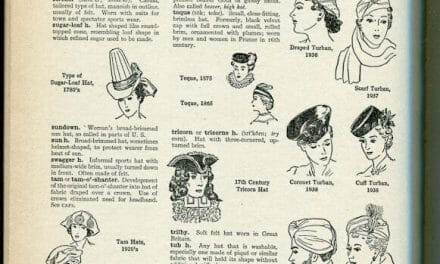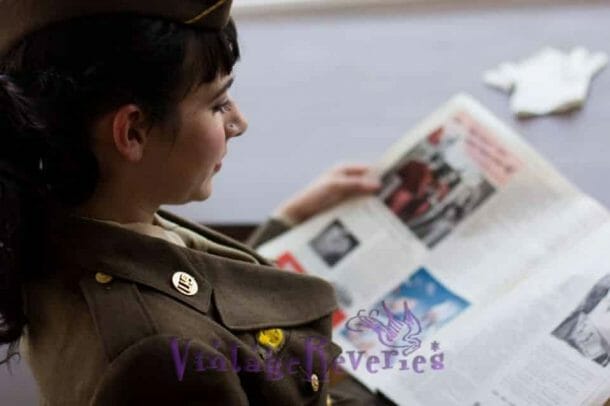
Timeline of Historical Fashion silhouettes thru the ages – Types of Satin continued

Oops! It seems I missed a page the other day when exploring the fascinating “Language of Fashion” dictionary—specifically the types of satin! This continuation provides even more insight into various satins, along with intriguing definitions of seams, serges, shirts, scissors, shoes, and, of course, historical silhouettes.
The timeline of historical fashion silhouettes presented in this dictionary is particularly compelling. It reveals how fashion, just like history itself, has often been defined, revised, and curated through the lens of the times in which it’s recorded. Fashion dictionaries written in the 1930s offer us a unique glimpse into what experts of that era considered noteworthy in fashion history and reflect how they interpreted silhouettes of the past based on their contemporary perspectives, which can be surprisingly different from how we view those same silhouettes today.
Historical Context Behind Clothing Silhouettes
Fashion silhouettes have always been shaped by the social, political, and cultural climate of their era. For instance, the opulent, voluminous gowns of the Rococo period (18th century) emphasized aristocratic extravagance in response to an era of wealth and indulgence, but this excess gave way to the simpler Greek-inspired high-waisted dresses of the Regency period, influenced by Neoclassical ideals of purity and democracy.
Similarly, the hourglass silhouette synonymous with the Victorian era reflected the rigid gender roles of the time—emphasizing a tightly corseted waist to showcase feminine modesty while simultaneously accentuating bust and hips. By contrast, the freer, straighter silhouette of the 1920s Flapper period was a rebellion against those constraints, showcasing the liberating social changes for women in the aftermath of World War I.
This dictionary from the 1930s captures some of these transitions through expert descriptions of silhouettes, pairing them with details about materials like satin and the specialized construction techniques that brought these designs to life.
Types of Satin – A Closer Look
Satin itself has quite a historical pedigree! First developed in China centuries ago, satin became a coveted textile in Europe—which often saw it as a status symbol of wealth and luxury. The dictionary provides a detailed description of different types of satins, explaining their finishes, textures, and uses. Here’s a quick summary from this extraordinary text:
- Antique Satin: A heavy, textured satin, often used in upholstery or evening wear. Known for its durability and elegant sheen.
- Charmeuse Satin: A lightweight, soft satin with a high gloss, typically used for lingerie, blouses, and bias-cut dresses. Popular during the 1930s due to the rise of body-skimming fashions.
- Duchess Satin: This luxurious, stiff satin was a staple in evening gowns and bridal wear, providing a structured and formal effect. Its use can be tracked back to the 19th century and was favored into the mid-20th century for its elegance.
These descriptions highlight how fabrics were chosen not only for their physical qualities but also for the way they contributed to the overall silhouette of the garment. Satin, with its ability to drape beautifully or hold shape depending on its weight, has been a steadfast favorite over the centuries.
Historical Highlights on Seam Styles, Shirts, and Shoes
Also tucked into this section of the fashion dictionary are some captivating tidbits about seams, shirt styles, and footwear of the past.
- Seams: Knowing the types of seams used in garment construction offers an additional layer of historical appreciation. For instance, the corded seam (decorative and reinforced) appeared in Victorian corsets and bodices, while the saddle seam—associated with durability—was often found in men’s riding coats and uniforms.
- Shirts: The Chukker shirt, which is described here, was likely inspired by polo players and their practical, button-collar designs. The Garibaldi shirt, on the other hand, speaks to the influence of mid-19th-century revolutionaries—its bold, red design reflecting the uniform style of Italian general Giuseppe Garibaldi’s followers.
- Shoes: Two entire pages in the dictionary are devoted to shoes, which isn’t surprising given their centrality to a silhouette. From the elegant, pointed Louis heels of the Rococo period to the sturdy button boots of the Victorian age, shoes have always been an integral part of completing a fashion look.
Silhouettes as Cultural Stories
What makes exploring historical silhouettes so endlessly fascinating is seeing how they evolve not just stylistically but symbolically over time. This edition of the dictionary paints a picture of the 1930s writer’s worldview—one deeply reflective of the preceding century’s cultural shifts.
For example, the full-skirted crinolines of the mid-19th century, which required layers of petticoats or cage-like structures, symbolized wealth and femininity. Yet, their return in the 1950s (influenced by Christian Dior’s “New Look”) carried a new post-war optimism and a desire for beauty amidst recovery. Similarly, comparing bustles of the 1870s to the streamlined pencil skirts of the 1930s reveals the broader shift from ornate to sleek, mirroring industrialization and the machine age’s influence on aesthetics.
History is subjective to a degree, as this fashion dictionary reminds us, because curating and deciding what to include—or exclude—always reflects the priorities of the era. What’s especially intriguing here is the snapshot we’re given of what the 1930s writer deemed important versus how modern historical perspectives might reorganize these details.
Fashion Experts and Their Choices
When considering sources like this 1930s fashion dictionary, it’s fascinating to see how the descriptions hinge on the author’s personal interpretation of history. This approach highlights how subjective (and often creative) renditions of the past can be, making it important to cross-reference historical records for a broader view. The language used, the garments spotlighted, and even the textiles prioritized—such as satin!—are all artifacts in themselves, revealing not just a history of fashion but the viewpoint of those discussing it.
From the folds of antique satin to the swooping hems of Regency dresses, this continuation is a treasure trove of knowledge for anyone passionate about fashion history. It’s exhilarating to contextualize why these silhouettes mattered—and how they continue to inspire modern design today.

























You must be logged in to post a comment.